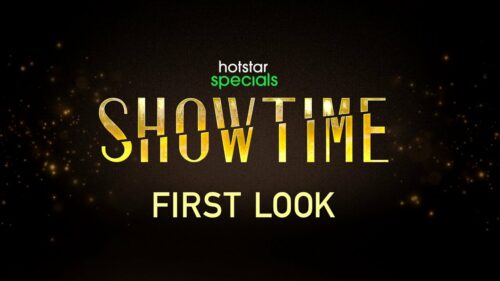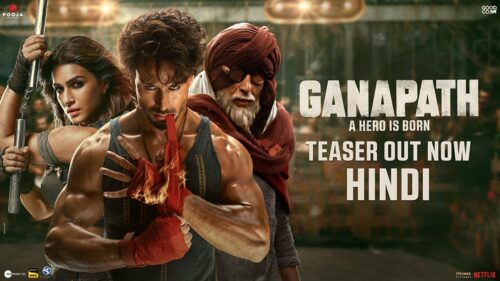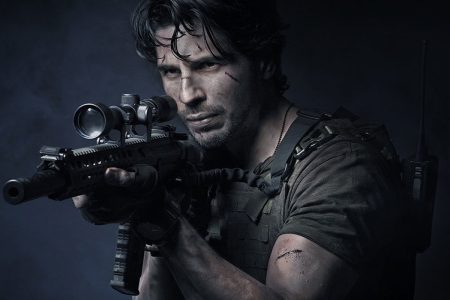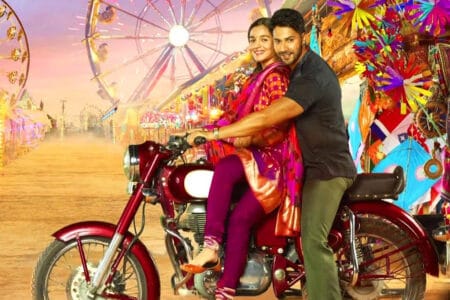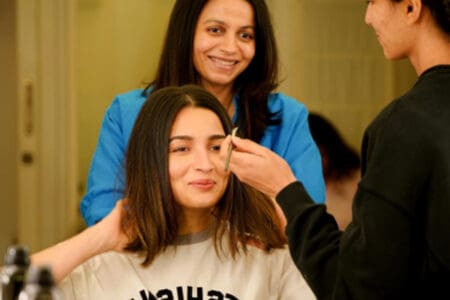Director Nikhil Nagesh Bhat, along with his actors Lakshya and Raghav Juyal, may have created the most violent film of TIFF 2023, but you could never tell by their calm, easy-going demeanor. Between the jokes and banter, they spoke about the hard work and team effort it took to bring ‘Kill’ to life on the big screen.
Is there anything you’ve pulled off in this movie that you’re particularly proud of?
RJ: Mujhe badi hairaani hoti hai ke main villain bana, abhi bhi yakeen nahi hota kabhi kabhi. Jis tarah main hoon life mein, bohat hi fun loving hoon. Toh yeh sab maarna, kaatna mere liye bada hi asmanjas mein tha, par mere liye yeh film ka character sabse zyaada mazedaar bhi tha.
L: Maine action kiya hai ‘Porus’ pe pehle aur harness kaafi use ki hai. But ek din tha jab hum kuch 10 ghante harness pe shoot kar rahe the. Aisa nahi ke sirf latke huwe ho, aapko koodna bhi hai, bachaana bhi hai, you have to remember the sequence. I don’t get physically exhausted very easily, but it’s the mental exhaustion that takes over the physical and troubles you the most. It was a proud moment to overcome that day. Jab woh din khatam hua, I just patted my back with pride.
Also, the entire journey to be honest, from day one till the end. Bohat hi physically draining cheezein hum ne film mein ki hain, mentally draining also. Personal loss iss character ka dikhaaya hua hai. The mental trauma that the character goes through which I had to express in the film, I didn’t have a lot of dialogues to express those feelings, I only had my actions and my face. That was the challenging part for me, and to be able to do that was one of the moments where I felt proud of myself. After every take I used to go up to Sir (Nikhil Nagesh Bhat) and ask if we got it right. And when he used to say “Haan mil gaya.”, that was everything for me. I lived for that moment when he’d say it’s good, we’ve got it, let’s move on.
It’s my debut film, to poora vishwaas tha unn pe. Kuch cheezein hoti theen ke main kehta tha aise karlein, it’s not like he used to say ke nahi bas aise hi hoga. We used to have a very mature argument on things. Most of the time, 10 mein se 8 baar, Sir hi convince karte the mere ko. Aur cheezain sahi bhi hoti theen because he’s a director. He thinks of things holistically. Aur main sirf myopically apne character ke baare mein sochta hoon. So of course, he would have the edge over that.
RJ: Nikhil sir the toh main aise play kar paaya yeh character. Mujhe nahi lagta ke kaheen aur main itna kar paata. Kyunki sir magic of the moment nahi maarte hain. Agar unn ko ek baar mein magic mil chuka hai, aur humein nahi laga ke mila hai, toh uss mein hi bol denge “Haan, done. Mujhe mil gaya hai”. It helped us so much. Pooray 77 days hum flow mein rahe, flow kabhi nahi toota. Sir knew what he wanted and bohat specific cheez aake bataate the. Hum ne prep bhi itna kiya tha. 9 maheene ka prep tha humara, toh hum tayaar ghusse the set pe.
NNB: I’m very proud of what we have done. I’ve got so much support from Karan (Johar) and Guneet (Monga Kapoor). That full fledged support to go out and do everything in itself is a huge moment for me. There wasn’t any kind of restriction. In fact, they wanted to play on front foot.
Then, getting support from each and every team and the actors, it made my job easy. I’m very proud of the entire team. I keep saying, a film isn’t just a director’s project. We had around 300 people on the set, and everybody has put their heart and soul into the film. You thought of a story, you thought of something that needs to be done. But then you see everybody working together and putting on the same amount of enthusiasm and energy in it, it’s just an overwhelming feeling.
A key part of the film is Amrit (Lakshya) and Fani’s (Raghav Juyal) chemistry with and against each other. How did you get to that point?
NNB: There’s a story behind this, where I failed (laughs). During prep time I told them “Listen, you guys should never meet. I don’t want you guys bonding.”, and to a very large part they didn’t meet. They also believed me that they shouldn’t meet. One day before starting the shoot, they were at a pooja at Guneet’s place. I was not there, I was already in Amritsar and these guys met and bonded very well.
RJ: We’re the best of friends now.
NNB: Jo maine socha tha, that was just wishful thinking. But it’s good that they met. You can see the sparks. Because they had bonded, they could fight each other without inhibitions.
RJ: Yes, that’s true. Climax shoot wale din hum dono kisi na kisi cheez se recover kar rahe the. To yeh mere upar tha main neeche, humari normal baatein chal rahi theen, “Bhai idhar maar. Aise kar, aise mat kar”, lekin jab aapne climax dekha hoga to alag hi kuch laga hoga.
I have a theory that a great dancer will always be a great action hero, and vice versa. Do you feel that’s true?
RJ: I think it is true.
L: It has a lot to do with knowing your body, more than being a good dancer.
RJ: Yes, it’s about awareness of your body.
L: As an actor also, you should be aware of your body. Yeh sirf chehre ya dialogue ka kaam nahi hota. When you do theatre, or any form of acting, for an artist to be extremely aware of his hands, his chest, how his breathing is. Dancers bhi yehi karte hain.
Raghav is the best dancer I’ve seen in my life. Iss mein bhi main yehi dekhta hoon that he’s very aware of his body. It’s not like he’s a dancer, that’s why he’s good. He’s just very aware of his body. Similarly with me – of course our bodies move very differently, hum dono ka style bohat alag hai – lekin I’m also equally aware. I don’t know if I’m a good dancer or not.
Related to this
Emraan Hashmi to lead Karan Johar’s ‘Showtime’ on Disney+ Hotstar
In Video: Teaser of Tiger Shroff’s ‘Ganapath’
RJ: Tu achcha dance karta hai yaar!
L: Yeh bol raha hai to theek thaak hoon matlab (laughs). Aur maar pitaai to bachpan se kar rahe hain. Filmon mein dekhte ho, mazaa aata hai.
RJ: Bachpan se commando hai humara bhai.
L: Bachchan sahab ko dekhte the aur yehi mann tha ke humein kab mauqa milega yeh karne ka. Yehi films dekh ke to bade huwe hain – ‘John Wick’ (2014), ‘ The Raid’ (2011). ‘Kill’ is like if ‘John Wick’ and ‘The Raid’ had a baby. A very loud and noisy baby.
What are the references for ‘Kill’? The action has the feel of foreign films but there are a lot of desi references as well, like in Fani’s dialogues.
NNB: Raghav’s dialogues, they were all written by a girl.
RJ: My dialogues were written by Ayesha Syed. Mere ko bhi bohat hairaani hui thi iss baat pe.
NNB: There were a lot of inspirations from action films. I’ve watched a lot of martial arts films from childhood, Jackie Chan films, Bruce Lee films, ‘The 36th Chamber of Shaolin (1978)’. Then there’s ‘The Raid’, ‘Atomic Blonde’ (2017), ‘The Night Comes For Us’ (2018). These films have influenced me a lot. Not while making this, but as a person.
When we started making this, there were no references used, because there are no references. Normally if it’s a martial arts film, you reference a martial arts film. This isn’t a martial arts film. His (Lakshya’s) fighting style – because he is a commando, he is trained in 4-5 different ways of martial arts. But the rest of the goons are street fighters, so there’s no style as such. They are just going to throw their punches in the air. That combination had no reference for it.
So how do you even write something like this then?
NNB: I come from Patna and I studied in Pune, so a big portion of my life at that time involved travel. Sunte the uss samay, yeh train lut gayi, woh train lut gayi, so this germ which was always there. When I started writing, we went under lockdown. So there was a lot of insecurity, claustrophobia, and frustration. All those feelings filtered down on paper. That’s where the rage comes from.
It’s an emotional journey for Amrit. In those 2 hours, he goes through a range of emotions. He needs to defend his friend, his fiancée, but he’s not able to. There’s guilt, there’s grief, there’s rage. There are a lot of emotions he’s going through.
For Raghav, there’s a lot of over-ambition and frustration that the father wants to keep him under control. Like I say, blood is a symbol of ambition and sacrifice. It is his ambition, and when he starts killing, he’s sacrificing his people for it. And Lakshya’s loss comes with so much blood because it’s a big sacrifice. It becomes personal.
RJ: It has symbolism in it, jitna khoon badhta hai baad mein iss film ke. Usne (Lakshya) pyaar ke liye maara hai. Maine ambition ke kaaran itna khoon karwa diya train mein. Mujhe badaa achcha laga jab sir ne yeh bataaya.
L: There’s a motive behind every punch. Amrit is killing for a reason. When I read the script, I remember Sir asking me what I felt about it. I had genuinely no words, because most of the film is treatment based and is high on action. On paper, if you see, “Amrit enters a coupe. He drags a boy down, shoves him with a knife.”, padhke aapko feel nahi aa raha. While executing and shooting it, that’s when it all came to life. Till a point Amrit is just defending, he’s just stopping the massacre from happening. And suddenly you see a personal loss happen that he couldn’t do anything about, and that too in front of his eyes. For a commando, that’s massive, because poori zindagi uss ne iss ke liye train kiya hai. And being a commando, if you couldn’t do something you were supposed to, that’s a lot of guilt and defeat. That becomes his everything, ke abb toh koi hadd nahi uske ghusse, uske rage ki. That was all in the script. Sir ki writing ne sab justify kiya tha, ke woh kar kya raha hai, aur kyun kar raha hai.
Somebody said it’s the most violent film they’ve ever seen. It’s truly so because of the intent and emotion behind it. It’s not like we’re killing people to look cool or to have fun with it. I’m not saying this in reference to any film, but cool bann ne ke liye, aur achcha dikhne ke liye bhi people do action, to look a certain way. Amrit is killing because he believes in it, he means it. And that was his (Nikhil’s) idea, that it needs to come from a personal space.
The film isn’t grand in scale, but it is grand in ambition. How did you manage to do so much in such little space?
NNB: The entire set was designed in a way so it can come apart fully and can accommodate the travel movements of the camera. There are no external lights in the carriage, all the lights are fitted inside. Rafey Mahmood, our DOP devised it in a way so that the lights don’t come in the way of the action or camera movements, the lights were on top. We had equipment which was fitted in the roof where the camera could go in and turn in different compartments. We did a lot of prep. The camera department and the set department had to work in tandem to design the entire thing. Because the entire set is going to come apart, and it has to come back while the shot is being taken. For example, one wall is moved, and while the camera moves, that wall has to come back. So everything was on hydraulics, there were people behind certain walls, there were motors fit. It looks like it’s a very restricted place but it isn’t. The design and prep behind it made it easier to shoot.







